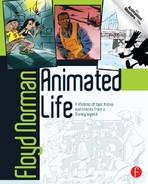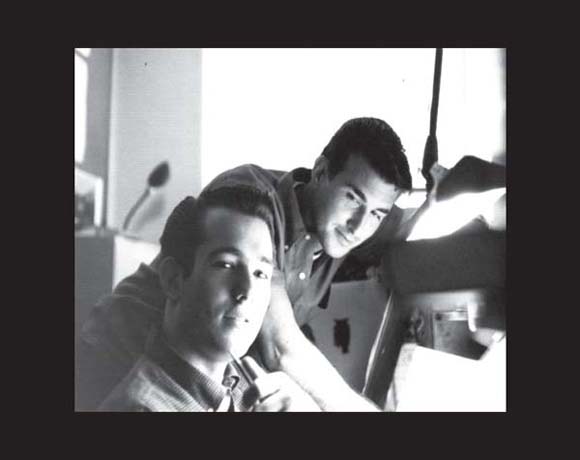24 |
Artist Retta Davidson
Women artists could hold their own in animation's “boys’ club.”
A Woman's Touch in the Cartoon World
There's a mistaken notion that back in the 1950s, the Walt Disney Studios was strictly a man's world and that women were not even allowed in the Animation Building. It was believed that women employees were restricted to the “women's work” over in the Ink & Paint Department, where they dutifully traced the pencil drawings onto sheets of acetate or painted in the colors.
Such was not entirely true. Although male artists certainly outnumbered the women, it might surprise you to know that Disney had its fair share of talented female artists working away at the drawing tables on the Disney classic feature film Sleeping Beauty.
Should you stroll into D-Wing on the first floor of the Animation Building, you would find a fair-sized room with three or four young women doing beautiful clean-up animation on the film's lead character, Briar Rose. The young women turning out the exquisite drawings were Doris Collins, Fran Marr, and Mary Anderson. The drawings were delicate yet masterful, and they certainly seem to benefit from a woman's touch.
Of course, there were other young women who labored in the Animation Building back in the 1950s. There were so many that I can't even recall their names, but I do remember the names Lois Blumquist, Elizabeth Case, Eva Schneider, Jane Shattuck, Marlene Robinson, and Sylvia Frye. Though no woman had yet to crack the animation “glass ceiling” and become an animator, they were clearly making their presence known. However, women were also represented in Disney's coveted background department, and talented painters such as Thelma Whitmer and Barbara Begg proved they could wield a paintbrush as well as any guy.

ARTIST CHARLOTTE HUFFINE
Women were no longer restricted to the Ink & Paint Department, and many sought jobs as animation assistants.
I don't recall women's issues being a big deal back in the 1950s, although there were certainly incidents that might be a cause for concern. Some artists regularly featured Playboy pinup calendars in their offices, and secretaries were often referred to as “girls.” However, the women I talked to took it all in stride and maintained an attitude of “boys will be boys.” I remember sitting on a studio park bench and chatting with animation artist Kay Silva about the situation. Unlike most women today, she simply laughed it off.
On the other hand, some of the veteran women artists could be as tough as any guy at the studio. Should you be foolish enough to turn in a poorly drawn scene, one rather tough, chain-smoking female artist could provide a “chewing out” that would make Milt Kahl proud. Disney artists back in the day were known for their noontime “thirst,” and one attractive brunette was known for her ability to drink many a man under the table.
By the 1960s, women were finally moving into Disney's once all-male layout department and working alongside the men. Talented layout artists such as Sylvia Roemer and Sammie June Lanham began creating layouts for 101 Dalmatians and The Sword in the Stone.

ARTIST LOIS BLUMQUIST
Lois became one of our instructors back in the 1950s.
Veteran animation assistants Retta Davidson, Grace Stanzell, Sylvia Niday, and Charlotte Huffine were eventually joined by newbies Joan Drake and Kimi Tashima. Times were changing, and their male superiors did not as easily intimidate this new generation of young woman. I still gleefully remember a confrontation between Joan Drake and Milt Kahl. The bombastic directing animator, intent on bawling out his young assistant, was reading her the Riot Act. The young woman looked at him and laughed in his face. The fearsome animator simply wilted on the spot. He turned and stomped back to his office, clearly defeated.
As the years passed, Disney Animation moved through several transitions as fresh young talent came on board. The old guard that once dominated animated filmmaking was moving on, and more opportunities for young artists were becoming available. Unlike years past, many of the women would now become animators, story artists, and even directors.
However, let's not kid ourselves. We know that men still dominate motion picture film production, and that includes animation. However, it might be worth a reminder that even back in the 1950s, women were not exclusively consigned to duties in the Ink & Paint Department. Among the hundreds that labored at the Walt Disney Studios, a fair percentage of the artists were women. This is a very real fact that any serious student of Disney animation history should not forget.

